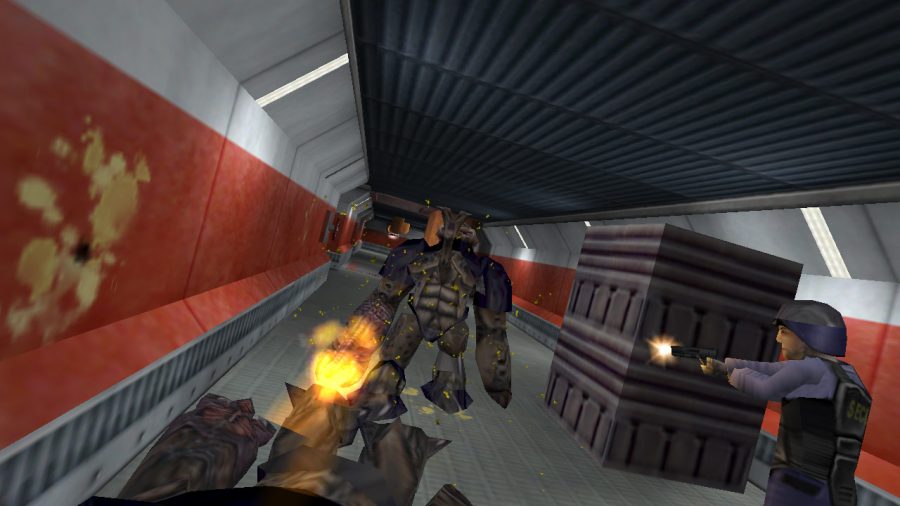‘Half Life’ undergoes virtual reality revival
A screen shot from the video game “Half-Life” is shown above. The game recently underwent a virtual reality transition.
Oct 18, 2021
In 1998, the landscape of video games was changed in a manner akin to how Stanley Kubrick’s “2001: A Space Odyssey” changed the medium of cinema forever.
Valve, a new software company formed by passionate programmers and game designers, released their first product simply dubbed “Half Life.” A first-person shooter that deviated from the arcade, maze-structured “Doom” clones of the era and provided a 3D adventure with a complete narrative told in linear story structure. That seems unremarkable today but was incredibly groundbreaking for its time period.
It followed Massachusetts Institute of Technology graduate Gordan Freeman, a regular scientist at the Black Mesa facility in New Mexico. Black Mesa acts as a classified government research facility that houses experiments with elements and technologies far more advanced than the outside world. He arrives to work on the tram for a regular day of testing only for an interdimensional rift to emerge from the facility, leading hoarders of alien monsters into the base. Soon, Freeman finds himself in ’90s action movie fashion having to shoot aliens and save the world.
The “Half Life” plot is interesting as it truly embodies style over substance and the necessary context to enjoy it. The story is unremarkable and not that original, but it’s groundbreaking and exciting for a video game to display. The atmosphere is tight, and the voice acting is terrible yet incredible from a technical point of view being from 1998.
It holds up incredibly well, and to capture the feeling of awe this 90’s classic gave to audiences back then, I played through the title from a unique perspective: virtual reality.
Get The Daily Illini in your inbox!
Thanks to the efforts of Dr. Beef, a modder behind several great VR ports of classic FPS games, “Half Life” is completely playable in VR with the Oculus Quest 2. From start to finish, you can immerse yourself in the Black Mesa facility, with incredibly well-done reversions to several mechanics like the flashlight being a real 3D item, guns being completely modeled and remastered and the crowbar acts as a completely virtual item smashable into everything from every angle. How this was possible with the code of a ’90s video game is astonishing.
As for how VR changed the core experience, it made it a unique run-through of the title yet remained very truthful to the main design. You never are taken out of the experience by having it be VR, all dialogue and story expositions are well-executed given how the characters move to your line of sight, something incredible given the head tracking capabilities of VR.
Gameplay and combat are translated well, with guns having the advantage of now being viewable via iron sight by looking through it. Miraculously, the head crab enemy that annoyed gamers back in 1998 is even more annoying as you have to manually crouch to hit the tiny alien crab. Rather than scroll down and click a key, you have to squat down and swing your arm to smash it to bits, provided you don’t slam your floor and shatter your wrist.
Nonetheless, it’s a fantastic and incredibly accessible package. Just some simple modding of a legally-owned copy of the game on Steam, and you’re set to go exploring Black Mesa in the virtual realm. I highly recommend it to “Half Life” veterans as well as VR users looking to experience a classic title in a new way.
“Half Life” VR is available on PC.






